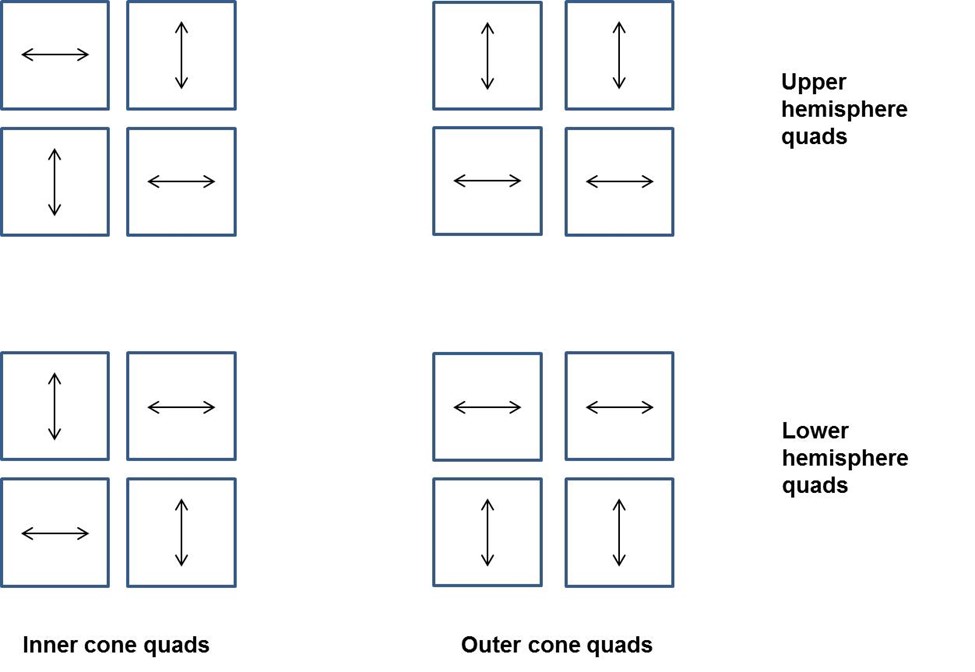Since orthogonal polarizations do not interfere with each other, two orthogonally polarized, uncorrelated speckle patterns can be overlapped in the target region to achieve a reduction in the speckle contrast. This mechanism is known as polarization smoothing (PS). The advantage of PS is that it does not require any time averaging as is needed for SSD smoothing. The limitation of PS is that the maximum contrast reduction is 1/2 
PS on NIF is implemented on a quad basis in the 1ω section of the FOA. Polarizations on two beams in a quad are rotated by 900 using full-aperture KDP or DKDP half-wave plates in the 1ω section of the FOA. See Appendix C for a polarization seating chart.
Figure 4-13. Schematic of the distribution of the 3w polarization within various NIF quads.





